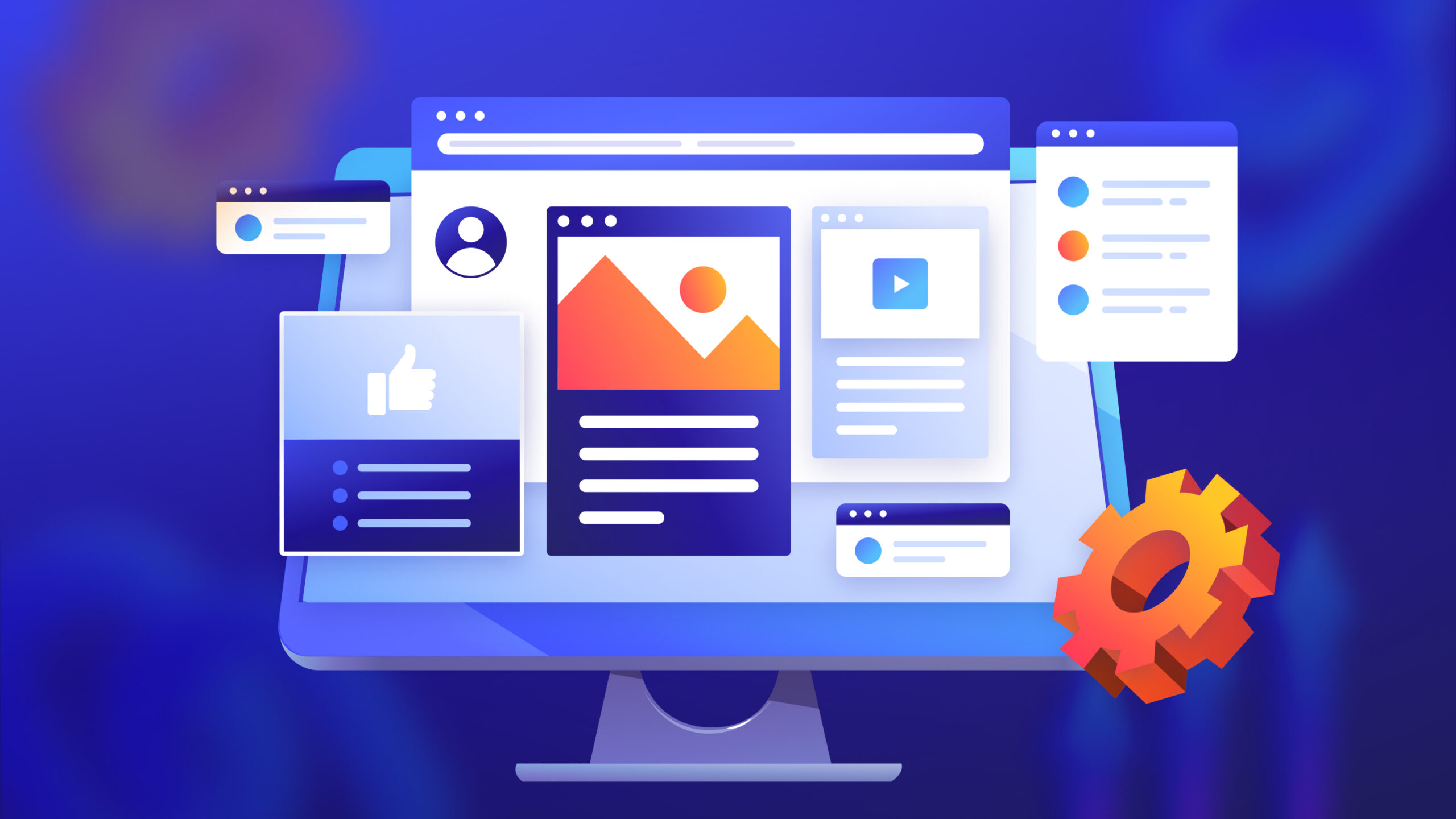
SaaS buyers do most of their research online, and they’re more than halfway through the purchase funnel by the time they talk to one of your sales reps.
From awareness to Closed Won, the customer journey involves hundreds of touchpoints. And your website has several of them.
Follow these SaaS website best practices to ensure it meets your buyers’ needs, search intent, and UX standards.
SaaS Website Best Practices for Conversions + UX
What makes a great SaaS website?
In our book, a site that can convert visitors into prospects is about as good as it gets.
But building a high-converting website is easier said than done—it requires meticulous planning, strategic execution, and continuous iteration based on user data.
There isn’t a one-size-fits-all approach. But there are seven important elements you absolutely cannot miss.
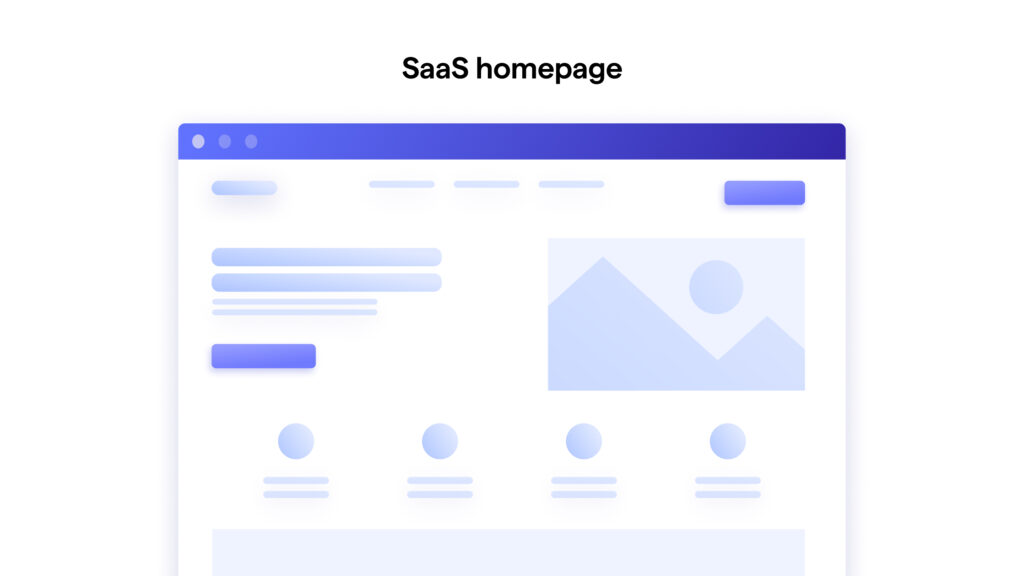
Get Them to Scroll (or at Least Keep Using the Site)
We’ve all heard the age-old wisdom, “Keep the best content above the fold.” But in the SaaS world, the whole site is the fold.
Sure, you should always have a clear value proposition near the top of your page, but here’s the magic trick: deliver it in a way that gets your visitors to venture further.
Think of your homepage as a tantalizing buffet spread. Your customers should want to taste every dish available. From sumptuous videos and vivid product images to compelling CTAs—spread it all out.
The best way to engage your visitors is to make your page interactive. Arrows, clickable buttons, and other interactive features guide your website visitors toward their end goal (that is, a solution to their problem).
Monday.com‘s homepage is one of the fastest-converting SaaS web pages on the internet.

By introducing 8 of its most critical use cases (plus “more workflows”) right away, it lets users qualify themselves. Once they move through the conversion funnel, they’ll come out the other end with a customized Monday.com platform pre-fitted to their exact needs.
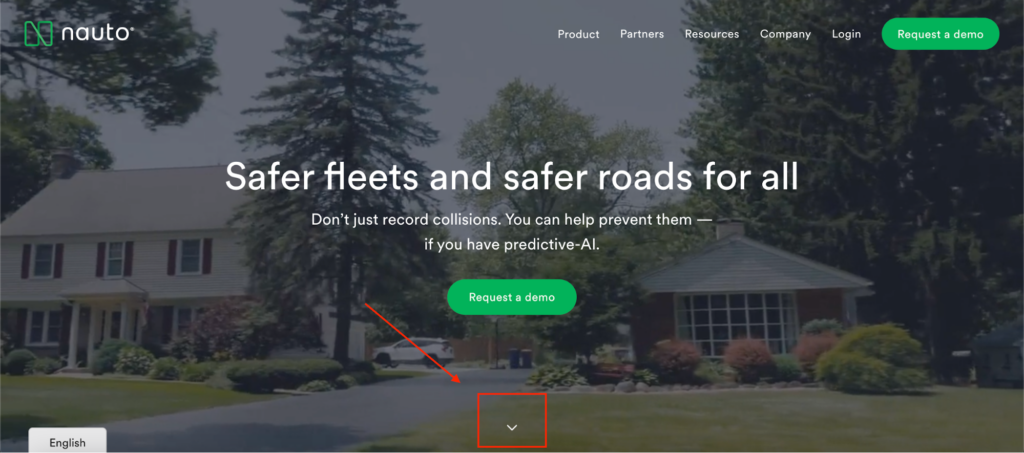
Nauto, a fleet management software company, uses a different approach. Its simplicity above the fold includes a bouncing, clickable arrow at the bottom of the page.
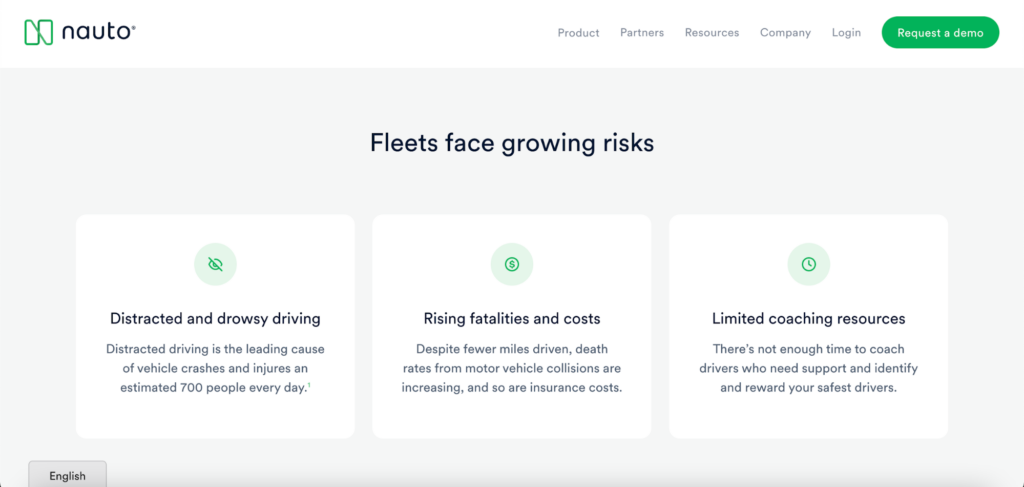
Once clicked, it takes visitors to the meat of the content. Starting with quantifiable problems, the site hooks viewers and encourages them to look closer at their current problems.
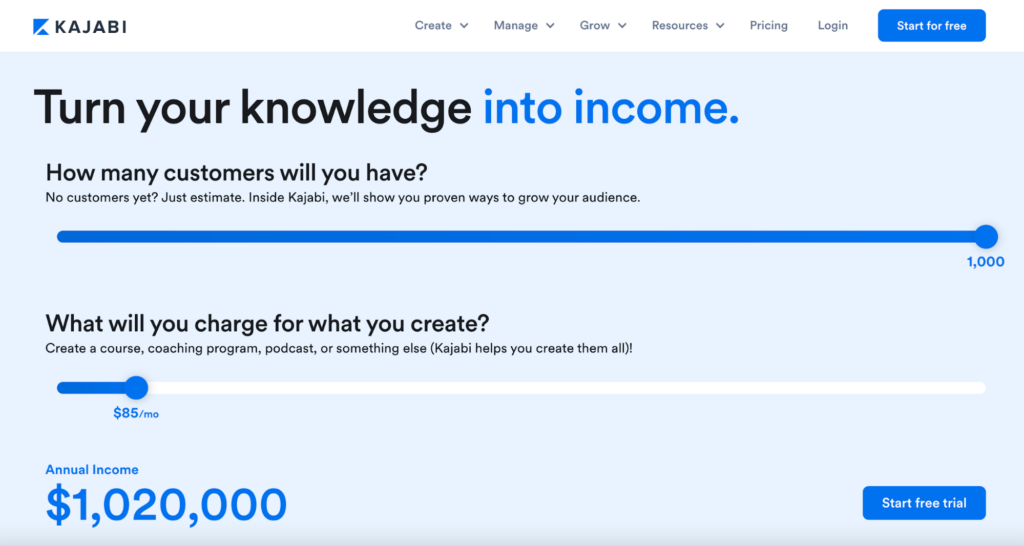
Kajabi’s homepage features an interactive configurator that puts earnings potential into perspective for aspiring solopreneurs and business owners who are on the fence about starting.
Have you ever thought about a $1,000,000 annual income as “1,000 subscribers at $85 per month”?
We didn’t, either.
Video is Queen
“Content is King” might as well be the SEO national anthem. But here’s the twist: While the King is mighty, the Queen rules—and today, Video is that Queen.
According to Vidyard’s 2022 State of Video report, 93% of sales professionals, marketers, and customer success reps say video converts as well as or better than any other content.
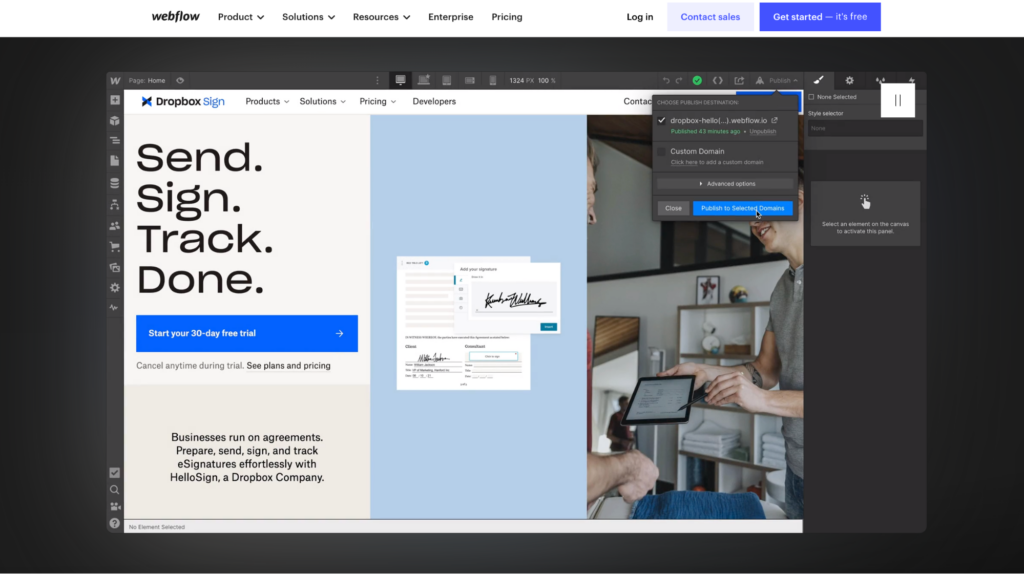
Webflow’s site does a killer job of cutting to the chase. After the first scroll, new website visitors aren’t met with words—they’re met with a live video representation of Webflow’s product in use.
For most, coding skills are the most significant barrier to building a website. Without saying a single word, Webflow tells its prospective users that they can build the powerful website they’ve always wanted without writing a single line.
Show Them What You Got
According to Gartner research, 80% of B2B sales interactions will take place online by 2025. And nearly half of all millennials (the increasing majority of potential customers) want a completely seller-free experience.
On SaaS websites, product animations and documentation do the AE’s job before the sales team even comes into the picture.
They’re like the friendly tour guide showing your website visitors all the great things about your product before they even book a call.
ClickUp does a really good job of using animations on its website.
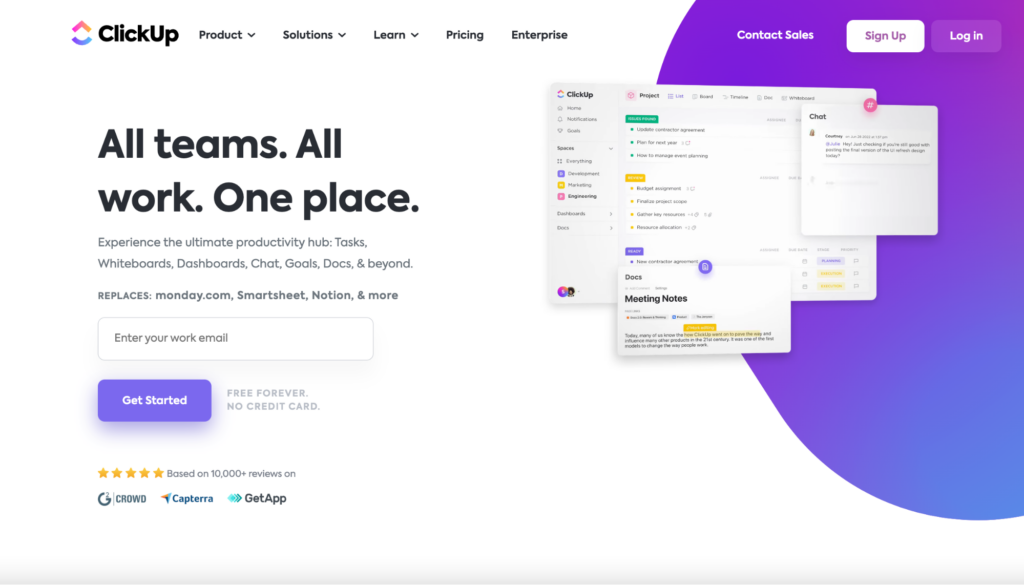
Above the fold, ClickUp has a solid CTA and email capture funnel (it even tells you what their software replaces). To the right, an animated image shows visitors what they can expect from using the product.
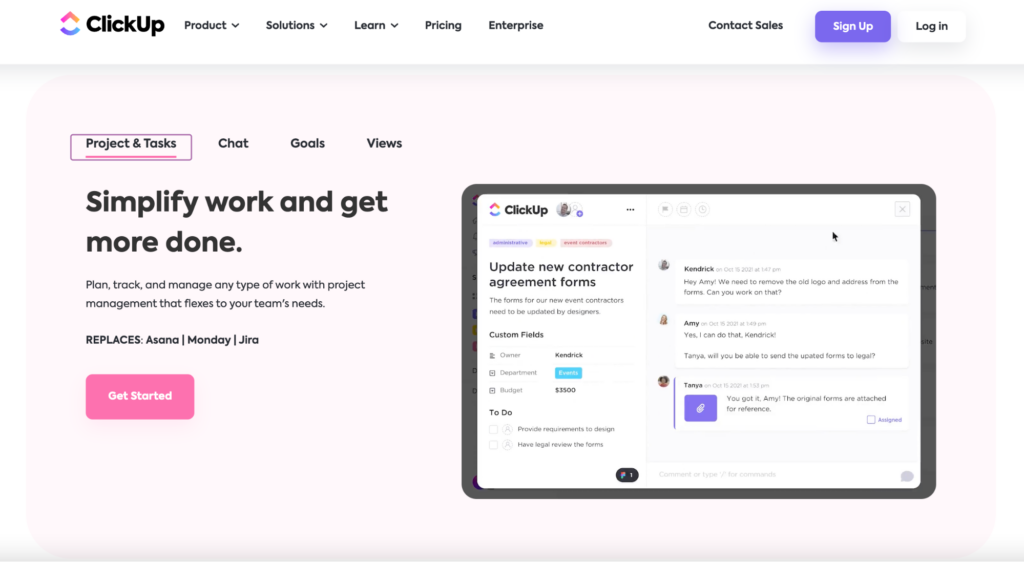
Once the user scrolls, they’re met with feature-specific product demos for everything ClickUp does.
All SaaS companies should strive to create this type of interactive, engaging experience for their users.
88% of people say they’ve been convinced to use a product or service because they saw a video of it in action. With animations like these, they won’t even need to press “play.”
Clear, Concise Copy
Seeing is believing, but words still have their place. Used correctly, copy is the decisive factor for warm leads on the fence about a product demo.
When people visit your SaaS website, they don’t have time to read through an epic novel. They need to know the essentials, and they need to know them quickly.
Here are a few copywriting tips to live by:
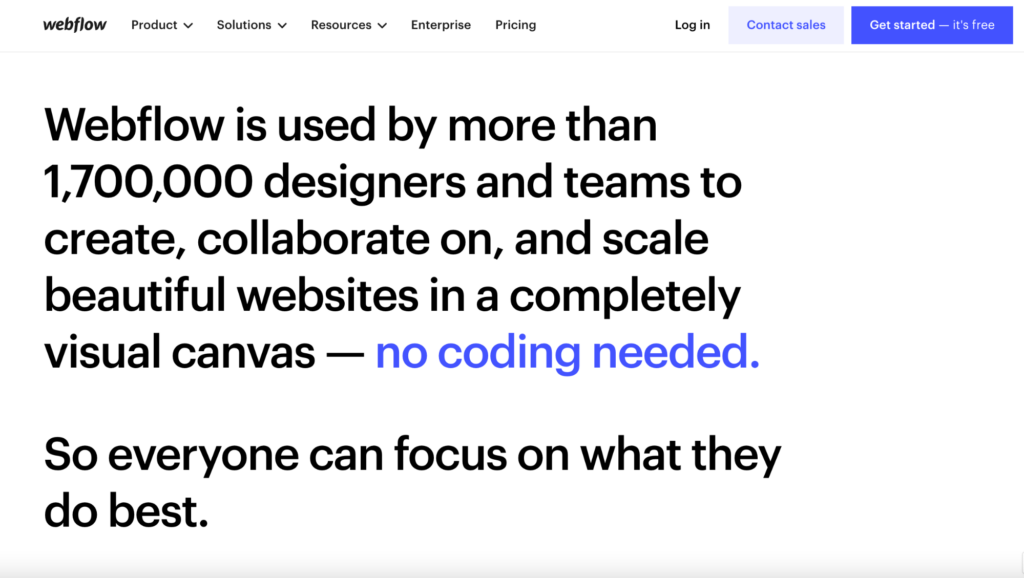
Spell it out for them. Webflow is the perfect example of a company that can take a complex subject and sell it to millions.
Rather than explain how exactly the site builder works or what it does, the site says what matters to its viewers (“no coding needed”) and highlights it in blue.
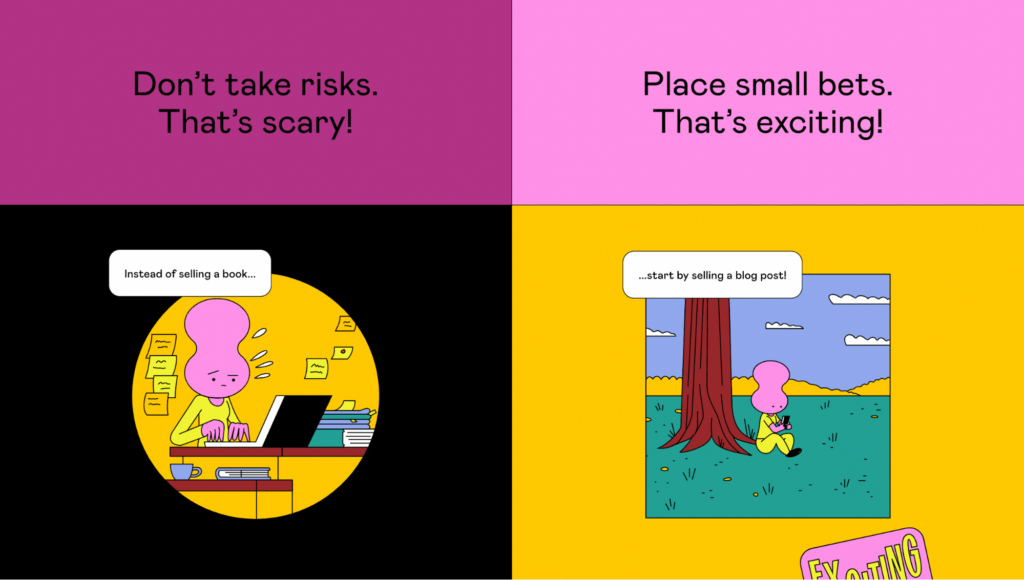
Explain why it matters. Who doesn’t want to save time and money? But explain how your product can help them do both—not just that it can.
Gumroad’s “Don’t take risks. That’s scary!” and “Place small bets. That’s exciting!” rhetoric is an excellent example of how to make the unique value proposition of a product tangible.
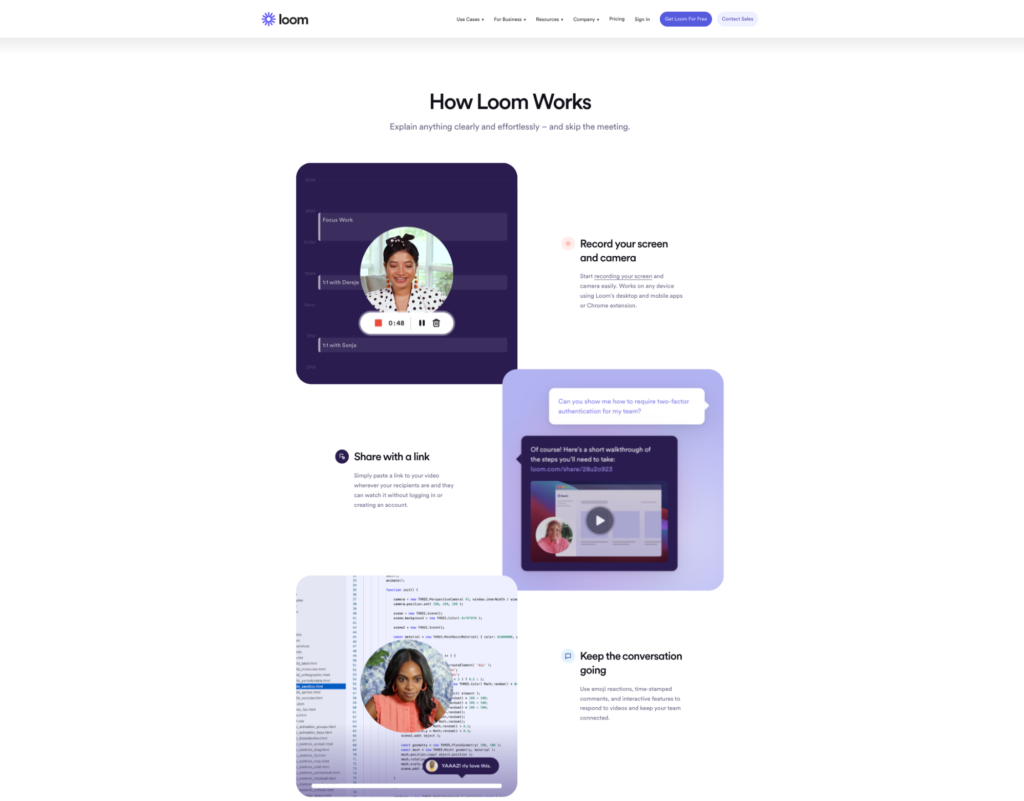
Show them exactly how it works (in only a few words). To convey simplicity, your copy needs to be simple.
Loom’s three-step process tells viewers exactly how the product works: “Record your screen and camera, share with a link, and keep the conversation going.”
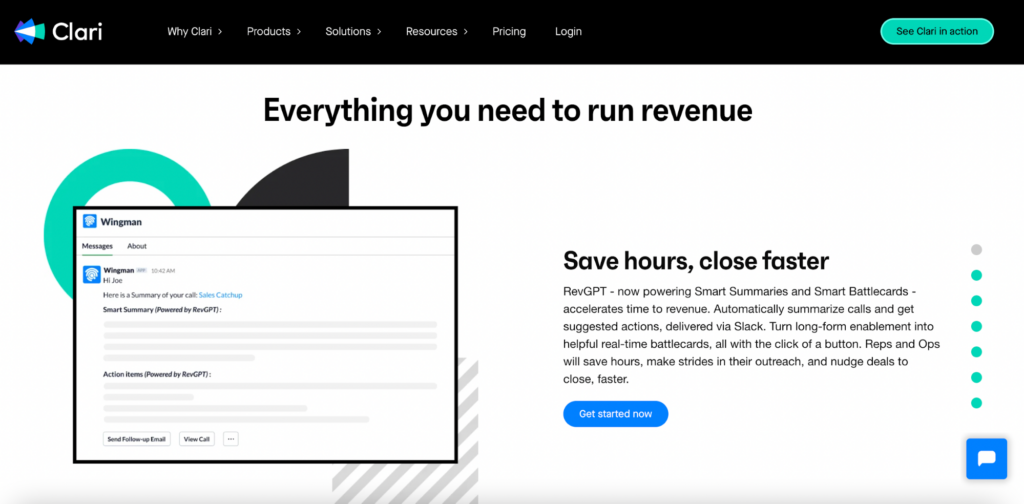
Speak in your prospect’s language. “Keep the jargon to a minimum” is lazy advice that doesn’t fully capture how you can use words to your advantage.
Find out what terms and phrases resonate with your prospects, and incorporate them naturally into your copy.
Terms like “long-form enablement” and abbreviations like “Reps and Ops” work for Clari—a revenue operations platform— for two reasons:
- They tell website visitors whether or not they’re in the right place.
- They let the right prospects know exactly what Clari does.
Pricing, Pricing Everywhere
Today, instant gratification isn’t a wish, it’s a norm. We’re all children of the internet age, and we’ve grown accustomed to getting answers in a click (or a tap).
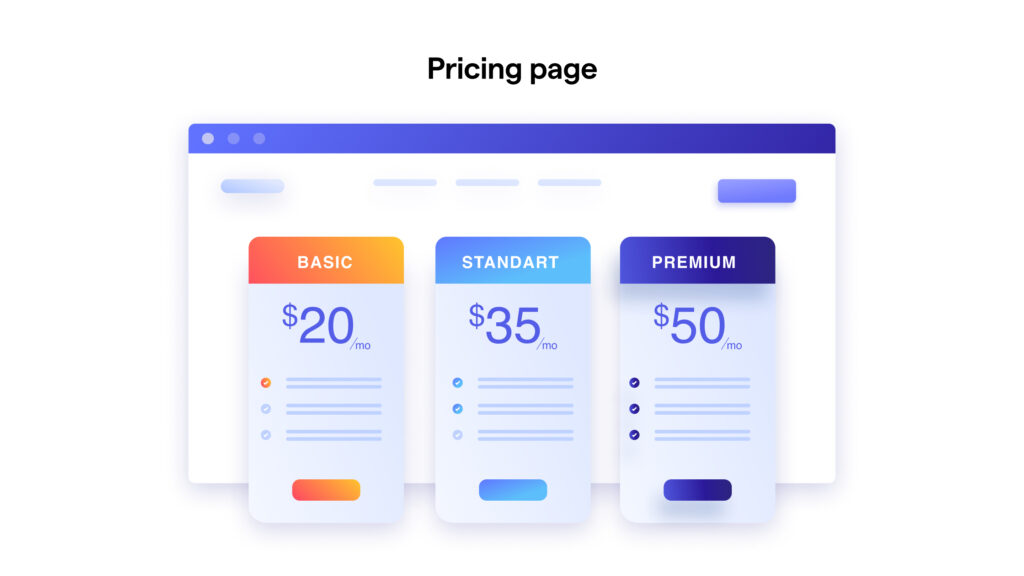
Forbes council member and serial SaaS founder Sanjay Ghare explains the concept perfectly: Most SaaS buyers want to know the product pricing long before signing up.
Think of it like checking Glassdoor before applying for a job or negotiating a salary: You check beforehand so you don’t feel like you left money on the table later.
And what happens if you can’t find it?
You move on.
For every SaaS company, there’s three sides to this coin.
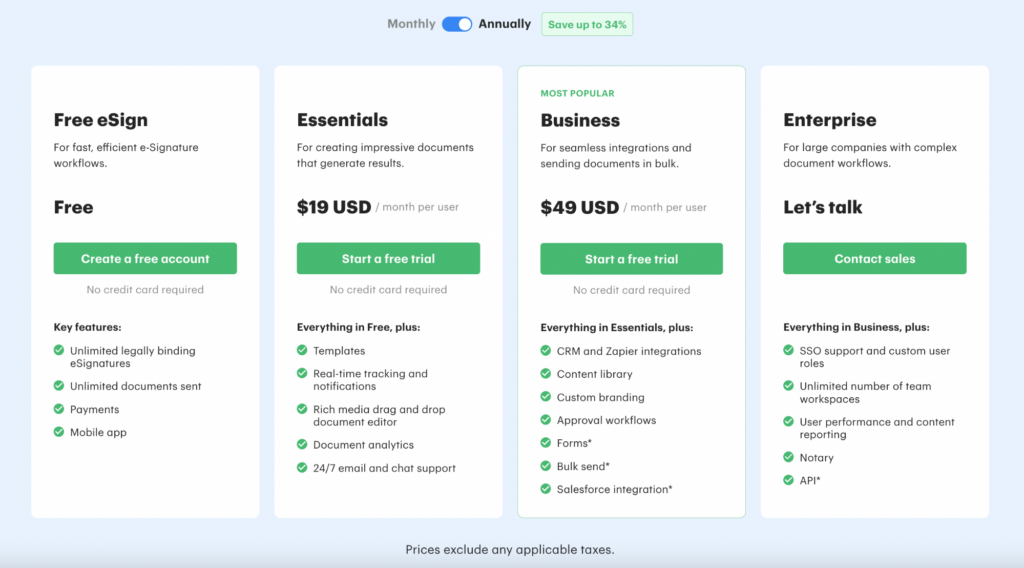
Be as transparent as possible on your website. Break down pricing tiers and features included in each, like PandaDoc.
Show them how much they could save by switching to annual payments (and boost your ARR in the process).
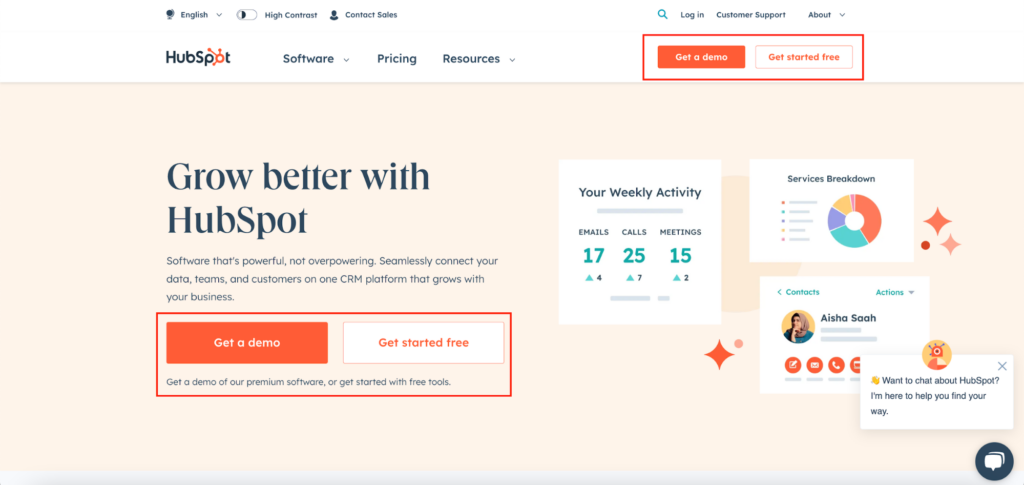
Make it easy to buy from you. Free trials, demos, and “buy now” buttons should be on every web page of your SaaS site architecture.
If your buyers can’t see where to move forward, they’ll move on to another SaaS solution.

Beat comparison sites to the punch. G2 Crowd, Capterra, etc. will presumably list your SaaS company and all its competitors. Create landing pages that compare other solutions and capture buyers who are weighing the benefits of multiple products.
Be Purposeful With Your Content Strategy
Content creation isn’t a wild, aimless dance. It’s more like a choreographed ballet: precise, thoughtful, and purposeful.
The hub-and-spoke model is the best way to do SaaS content marketing. It starts with pillar content—that is, long-form pieces that link to your blog posts, explainer videos, and product demos.
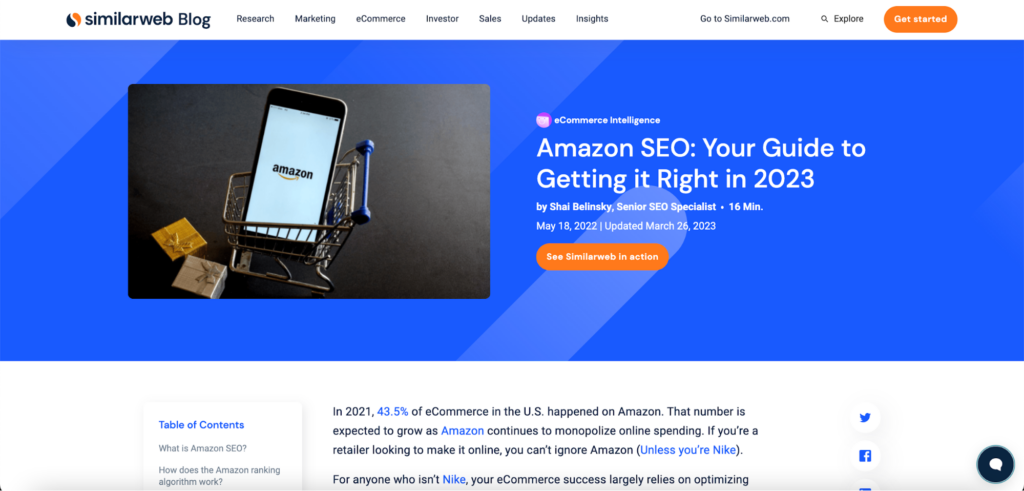
Pillar content (like SimilarWeb’s blog post on Amazon SEO) should be the foundation of your website—it’s the first thing visitors should see when they land on the homepage. It’s also essential for SEO purposes, since most of your targeted keywords will be included in the text.
As your website’s central piece of content, pillar content should cover the who, what, why, and how of your product.
It should also link to other pieces of your site architecture that relate directly to it. That way, viewers can move seamlessly from one page to another without having to search far and wide for the right information.
Our SaaS SEO guide is a perfect example of what we mean (and a must-read!)
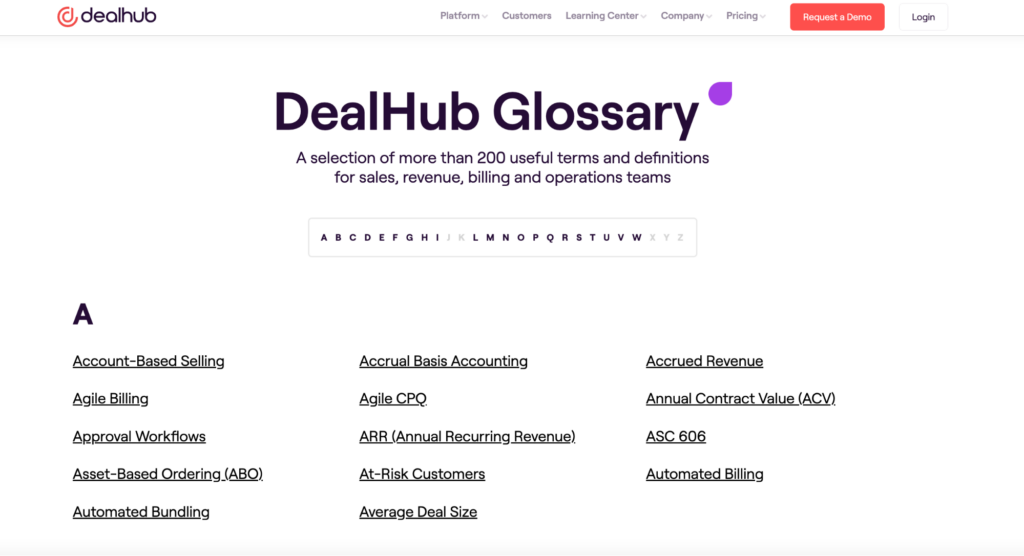
Many SaaS companies (like DealHub above) also incorporate a glossary section into their site, which is a list of industry-related terms and long-form, article-style definitions.
For readers, it’s a way to demonstrate your knowledge of the space. For search engines, it’s SEO gold. Every month, DealHub drives thousands of new visitors to its SaaS product (CPQ software) with its glossary section alone.
Digital Word of Mouth
Social proof sells. 90% of buyers are more likely to convert after reading reviews.
Think about it: What’s more convincing? You saying your software is terrific, or a real-life user raving about how your solution transformed their business?
Exactly.
Brex does really well at incorporating every kind of social proof throughout its website.
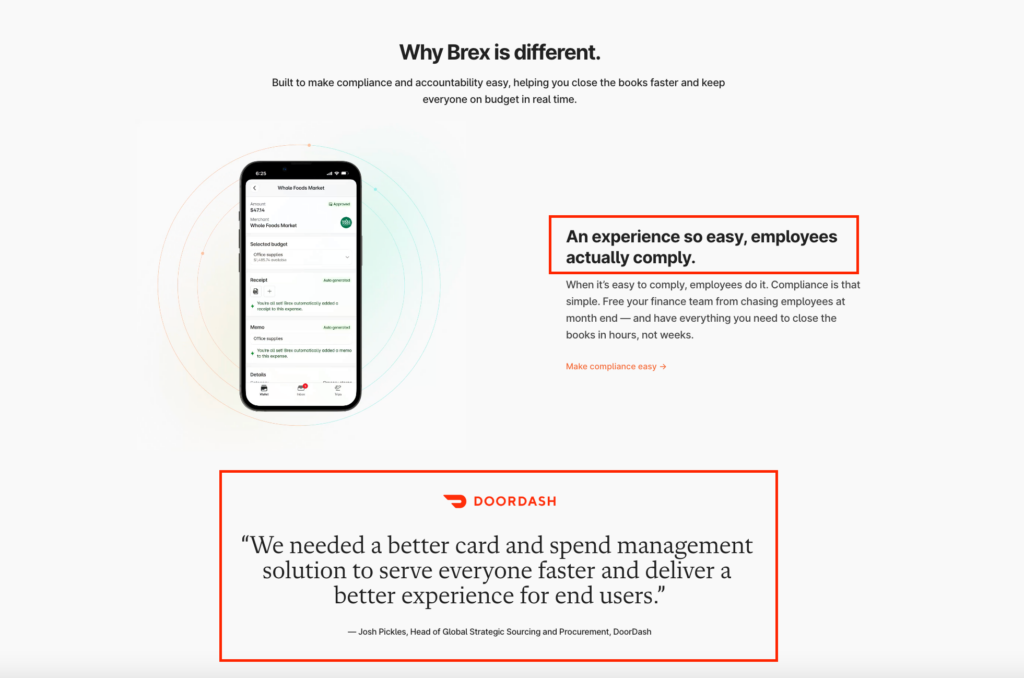
Woven between the benefits it lists on its landing pages, customer quotes prove that Brex’s features actually pay off.
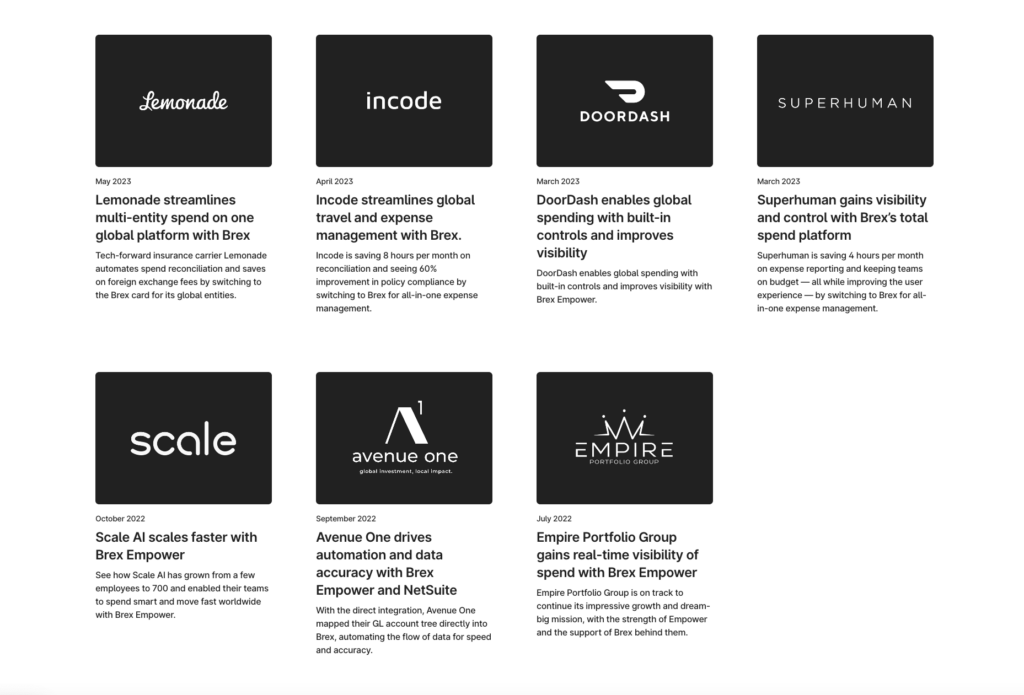
Brex includes feature and benefit-driven case studies for different industries, customer segments, and detailed reviews from dozens of customers.
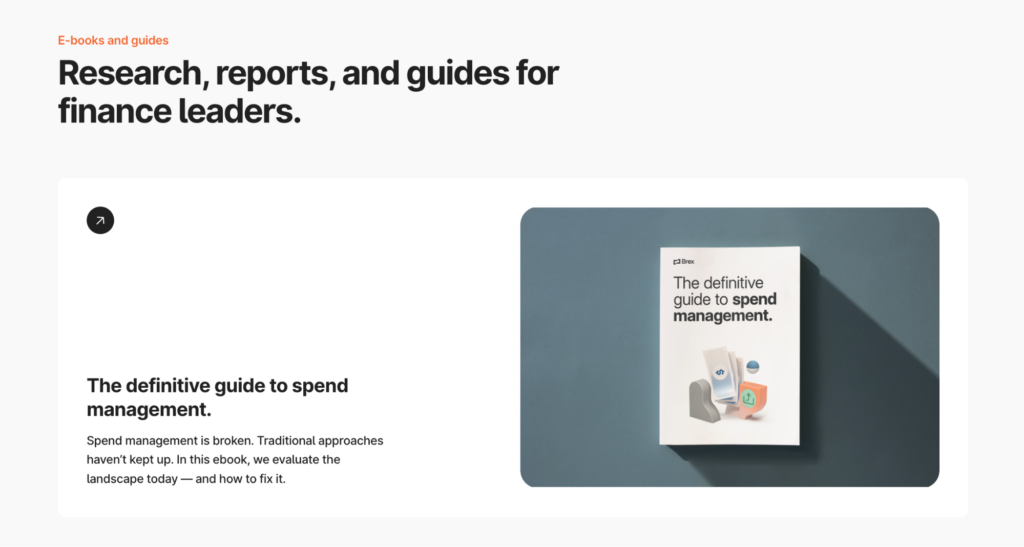
And Brex includes plenty of guides, webinars (which they host every week), and customer resources for everything under the sun when it comes to finance operations.
Throughout all of these important pages, they highlight their users and customer data when explaining their points.
All the Website Best Practices Everyone Should Follow, SaaS or Not
SaaS website structure definitely has its nuances. But there are a few essential practices every site owner should follow.
Software company or not, you can’t miss these critical elements when optimizing your site.
Responsive & Mobile-First
For a site to be “responsive,” it must:
- Render correctly on every device
- Display content in a way that’s easy to read and navigate
- Adapt its design from one device to the next without losing functionality
In other words, your SaaS website should always look fantastic no matter which device it’s being viewed on.
Mobile visits now account for 55% of all web traffic. And Google’s mobile-first indexing guarantees that your site will be prioritized in SERPs.
It’s easier than ever to make sites mobile-friendly, too. You can use Google’s Mobile-Friendly Test for fast, reliable results.
Here are a few tips for making your site more responsive:
- Use web-safe fonts
- Keep the most important elements big enough to read on smartphones
- Prioritize page speed, especially on mobile
- Make the most of “micro-interactions” (e.g., animation and hover effects)
- Ensure all forms are easy to fill out on mobile devices
Accessibility
Web accessibility is a must for any website, but SaaS websites in particular should comply with W3C’s WCAG 2 guidelines.
By making your site accessible for people with disabilities, you’ll also improve its usability and user experience overall.
What web accessibility means:
- Including features like alt text, audio and video transcripts, captions
- Optimizing your site for screen readers and keyboard navigation
- Making sure all interactive elements are clearly labeled
- Ensuring your color palette has enough contrast to be readable by everyone
- Providing subtitles or sign language options for videos
Clean & Intuitive Design
When it comes to web design, less is always more.
Every single element of your site should be there for a reason. Unnecessary widgets, pop-ups, and sidebars can distract viewers from taking the action you want them to take.
You want visitors to focus on the one thing that brings home the bacon: Getting people to convert.
- Keep your design as clean and distraction-free as possible. Place calls to action in areas of high visibility, like the center of the page.
- Optimize all visuals for maximum impact. Make use of typography, contrasting colors, and animation where appropriate.
- Don’t use too many colors. White space and negative space also play a key role in a modern, minimalistic design.
- Make your SaaS website structure intuitive and simple to navigate. Place internal links, clickable buttons, and additional information prominently on each page to keep visitors moving through your sales funnel effortlessly.
Technical SEO Best Practices
We have a full article on SaaS technical SEO, which you can read here.
Briefly, here’s the rundown:
- Focus on page speed. Nothing turns off visitors faster than a slow-loading site.
- Look at Core Web Vitals scores and Google Analytics data to understand how your site performs behind the scenes (and what you can do to improve it).
- Use rich snippets and structured data to increase visibility and CTR in SERPs.
- Ensure all URLs are SEO-friendly and use canonical tags to avoid duplicate content.
- Create a sitemap – it’s the best way to inform search engines about all your website’s URLs.
- Make sure all images include alt tags with keywords for better visibility in image searches.
- Pay close attention to response codes and broken links. If a page is returning a 404 error it won’t be indexed by search engines. If it returns a 301 or 302 redirect, it will hurt your rankings.
“Contact Us”
Make it easy to contact you, otherwise your prospects never will.
Add a “Contact Us” page to your SaaS website, and make sure it’s prominently featured in the main navigation.
Include an online contact form with clear fields so users can easily reach out to you.
You might also consider adding a chatbot for fast customer service. They’re great for quickly answering questions, redirecting to different pages (e.g., FAQ section or a relevant blog post), and reducing response times.
Optimize Your SaaS Website With Linkflow
You might not have time to figure out where your website falls short or how to implement all these SaaS website best practices. But we have all the time in the world.
The best way to maximize your website’s potential is to work with a SaaS SEO agency.
Talk to our experts today, and start maximizing your website conversions tomorrow.
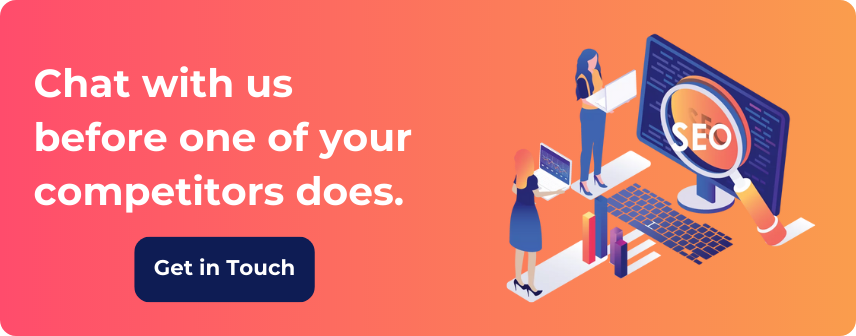
Brittney Fred, SEO Analyst
Brittney has been working in SEO and digital marketing for ten years and specializes in content strategy for the B2B SaaS industry. She is based in Denver, CO and absolutely fits the Denverite stereotype. You’re just as likely to find her hiking, snowboarding, or doing yoga as reading sci-fi or playing video games.
